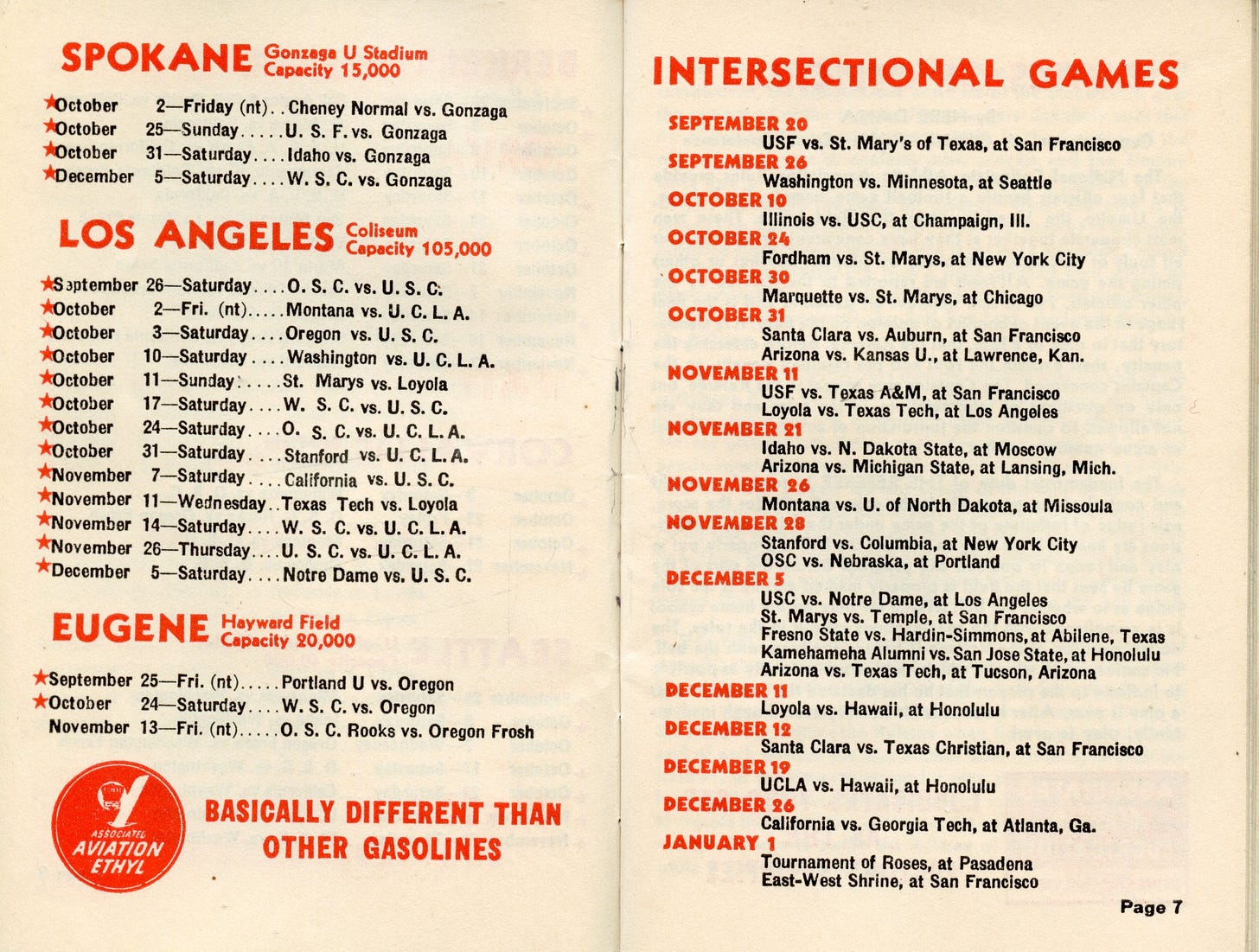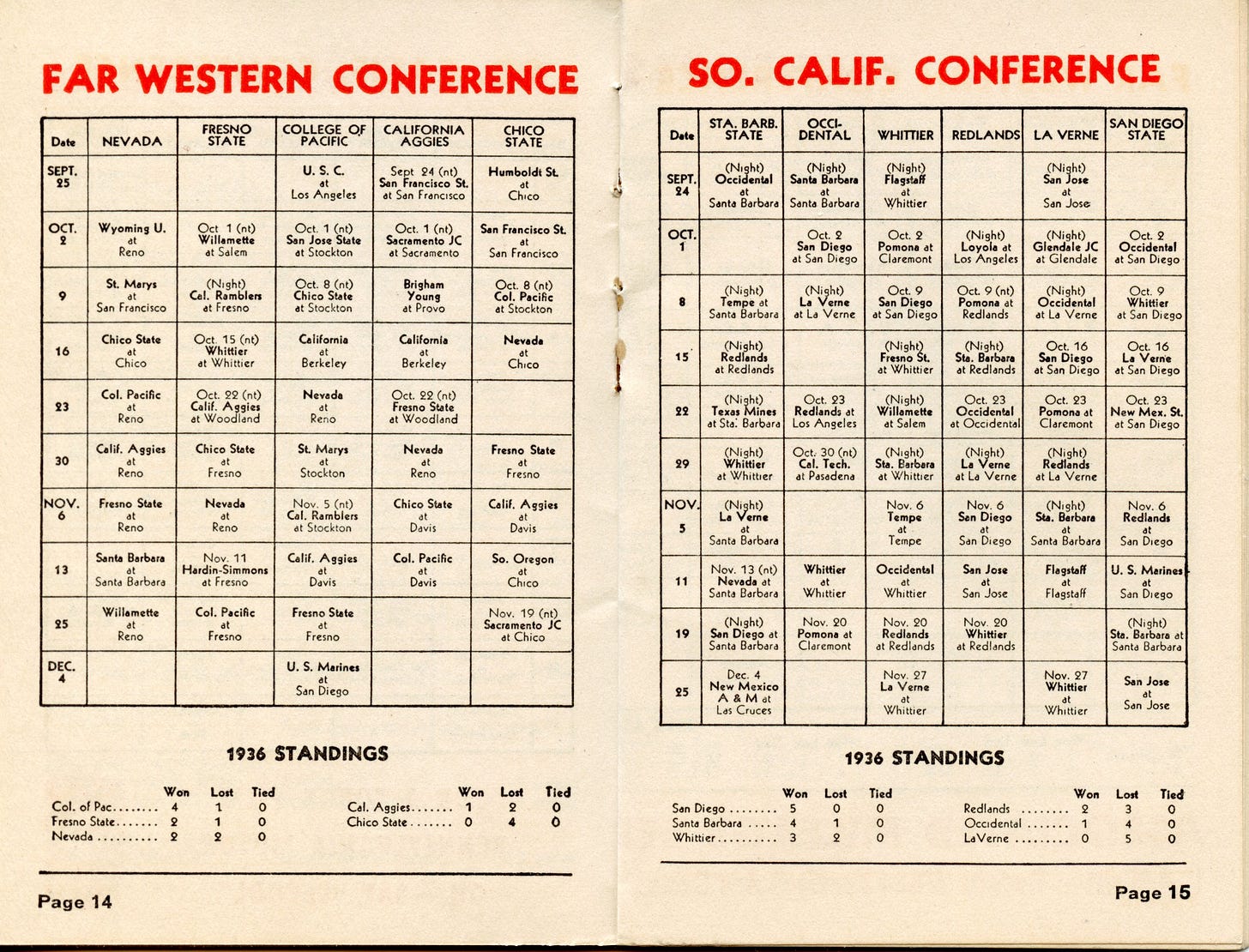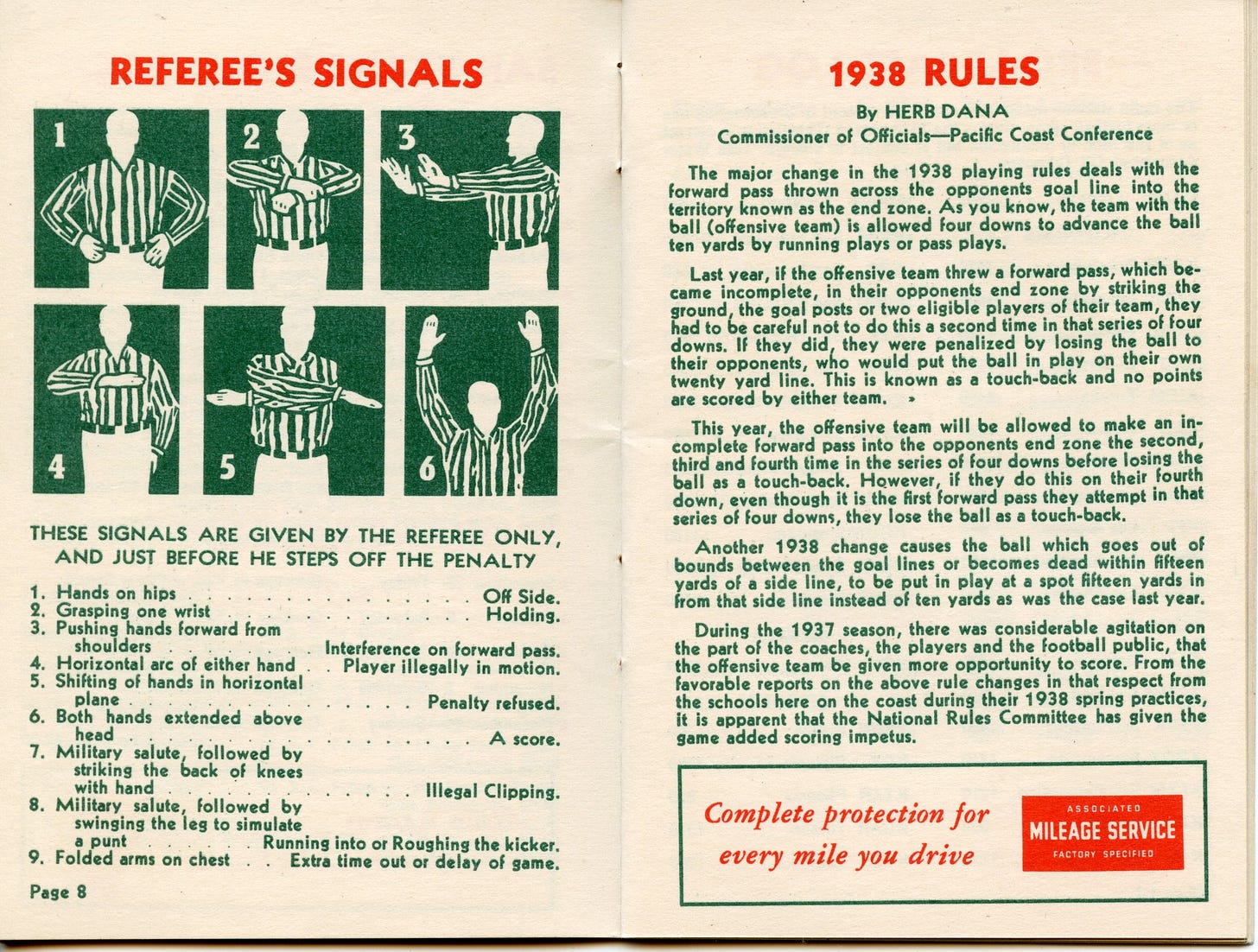Today's Tidbit... 1935-1938 Associated Oil Football Schedules
Companies find many ways to entice consumers to buy their goods. Sometimes, they attract customers by providing products or services that are better than their competitors—imagine that—but they often rely on marketing, imagery, and intangible associations to connect with buyers.
The latter was the case in the late 1930s when Associated Oil sold gasoline, oil, and automotive services to consumers in the Western U.S. under the Associated Oil or Flying A brands.
As discussed recently with the 1937 Grantland Rice Cities Service brochure cover that led to a pop quiz, the execs in the Cities Service and Associated Oil offices thought an effective method of connecting with customers was to give away annual brochures detailing football facts and figures, particularly team schedules.
Besides gas stations, the sponsoring companies for the brochures tended to sell products purchased by men, such as men's clothing, alcohol, insurance, automobiles, and, of course, gasoline. Men bought most of these products, and since manly men liked sports, especially football, the schedule giveaway made sense.
Recently, I saw these four little beauties for sale online, so I offered the seller less than his asking price. Recognizing that I was a highly skilled negotiator, the seller immediately accepted my offer, resulting in the items entering my hands today.
I bought the items based solely on the images of the covers.
There were no other images displaying the information inside the pamphlets, but I own similar items, so I understood their general contents. Still, I did not know whether something in the four brochures would be worth sharing with you. It's a situation similar to opening a box of Cracker Jacks. You know the Cracker Jacks will be tasty, but you can't predict the quality of the prize.
I wrote the setup above before I received the package in the mail, so here's what I found today when I opened the metaphorical Cracker Jacks box and examined the four prizes inside.
Nothing about the four prizes was particularly special, but each had at least one interesting feature. Since I spent money on the four, I'm getting my money's worth by telling you about them.
So, for each volume, the year's game schedule is variously organized by date, team, or city/stadium.
Besides some schools surprisingly considered major West Coast teams at the time, this view shows they often played college football games on Fridays and Sundays. Due to the lack of lighting, high school teams played on Saturday afternoon games more often, and without an NFL team on the West Coast, Sundays were also open for college games.
Next, we have two pages from the 1936 schedule.
The page shows games by stadium, ranging from the LA Coliseum, which USC and UCLA shared since it sat 105,000, to Oregon's Hayward Field at 20,000, and Gonzaga's 15,000-seat stadium. The opposite page shows intersectional games, which were typically limited to one per team. The intersectional games include late-season contests in Hawaii against club teams and the University.
The 1937 schedule included listing for the Far West Conference, which dissolved in 1982. Nevada and Fresno State now play FBS, while Cal Davis plays FCS. Pacific dropped football after the 1995 season, and Chico State dropped in 1997.
The Southern Cal Intercollegiate Conference is still going strong, though UC Santa Barbara left the SoCal before dropping football in 1991, and San Diego State left a ways back and plays at the FBS level today. The four private schools remain in the conference along with five others, though Occidental dropped football in 2020, and Whittier did so in 2022 but will bring it back in 2026.
The 1938 brochure informed us about common referee signals, noting that only the referee gave the signals back then. The ref is still the only one who signals penalties, but the other officials did not signal touchdowns or other scores then; they left that to the referee.
Herb Dana wrote the contents on the opposite page. We covered him in the past due to his Associated Oil radio show. Dana tells us that the 1938 rules finally stopped penalizing offenses for throwing incomplete passes into the end zone. Also, the hash marks moved from ten yards from the sideline to fifteen yards. (College hash marks are 20 yards in from the sideline today.)
We'll close with an image of two back covers showing a beautiful, streamlined automobile from the 1930s and the smiling Associate Oil franchisee that adorned much of their advertising.
I hope you enjoyed the tour of the Associated Oil schedules. If so, I got my money's worth.
Click here for options on how to support this site beyond a free subscription.








*Hash marks are 60-ft inbounds, 40-ft apart.